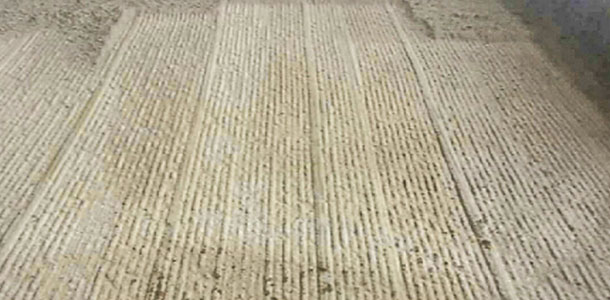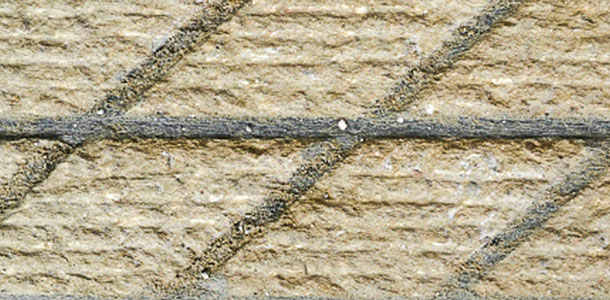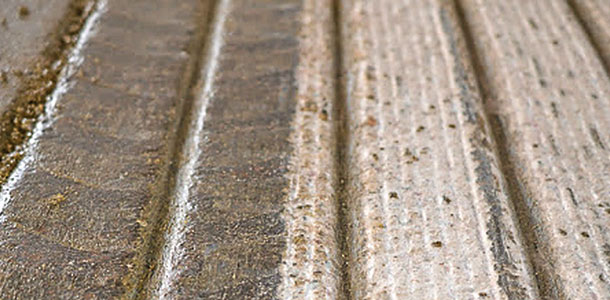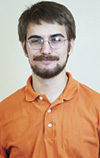Dairy cows can spend their entire lives walking on concrete, and that’s why Jacob Gerlach says proper floor surfacing is key to hoof health. Gerlach grew up around dairy farms, helping his father with A.I. and learning dairy practices from vets, nutritionists and farmers. He is currently the public relations manager for TrakRite, a company that provides concrete grooving, milling and texturing for dairy barns.
“When you’re talking about the dairy industry, basically everything comes back to the cow,” Gerlach says. “Your whole foundation is on your cow, and that’s where your bottom line is going to come from.”
Gerlach credits Karl Burgi, of the Wisconsin-based Dairyland Hoof Care Institute, with pioneering the concept of the ideal floor, in which grooves are spaced 3 inches apart at the center-line and are three-quarters of an inch wide and three-eighths of an inch deep. An alternative to grooving is to remove the top three-sixteenths of an inch of material from the floor to provide texture.
“You want to do it in a way that leaves [the floor surface] level. The cow’s hoof performs in the same way our feet do. Whatever’s comfortable to us is comfortable to the cow, too,” Gerlach says. “You want that nice, level, even surface with traction. In the same way that you don’t want a cow’s hoof to slip, you don’t want your hired hands’ boots to slip, either.”
This type of carefully prepared floor requires maintenance. Gerlach says that over time, any kind of scraper will wear the texture down on the floor, removing the surface texture until the floor becomes smooth, glassy and dangerous.

“If you’re running a rubber scraper over it, obviously it’s going to have a lot less effect on it, but in turn, running your alley scrapers back and forth, you’re going to wear down on it more. What we’re finding is that people who have had sand bedding or grit on their floors for traction – the milling does wear down significantly more with sand, just like a piece of sandpaper. Any time you have a scraper going over it, it’s just doing that much more damage.”
Another option for floor surfacing is stamped concrete. During this process, a roller or similar device passes over the concrete while it is still fresh in order to create a pattern, often in the shape of a diamond, hexagon or square.
Gerlach warns, however, that if not done correctly, stamping can spell trouble for cows’ feet. If not stamped at the right time during the curing process, the surface of each stamped block may curve upward instead of remaining level. The resulting rounded top makes for a slick, glassy floor that does not support even distribution of bodyweight, thus presenting a hazard to cows.
Is it possible for a floor to offer too much traction to the hoof? “Absolutely,” Gerlach says. “When you get too much texture, it becomes rough and uneven, and that will really wear down on the cow’s hoof a lot more than it should. That way you’re going to get wear and ulcers and udder health-related, hoof health-related problems.”
A floor that isn’t level or properly textured can cause lots of problems for cows. “You can have shifting of the hoof, stress fractures and ulcers. Anything on the dairy barn floor can get up into the hoof and cause infection.

And a lot of symptoms won’t be immediate and will fester over time. And those are things that your hoof trimmer will be able to tell you what’s going on,” Gerlach says. “Splitting, the one leg goes one way and the other goes the other way; right there, you’re down a couple thousand dollars. It’s not worth it to have a slippery floor.”
The first signs of a slippery floor are visible well before the vet bills start coming. The first sign, Gerlach says, is a glassy surface. Then cows start slipping. “You don’t want to wait until you have a split cow. Then it’s just costing you more time and money than it’s worth.”
The cost of resurfacing varies by the size of the barn. Gerlach said, “anyone with more than about a 1,000-cow dairy, if they’re going to do their whole barn, then you’re looking at a solution where we recommend you buying a machine over having a service done.”
The average barn floor lasts three to five years, and Gerlach says that the $25,000 to $35,000 spent on a milling machine will repay itself in savings over the life of the barn. “Anything smaller than that, it just saves the farmer time and money to have us come in and do it.
It depends on the individual scenario: How much concrete you have to groove, how fast it’s wearing down, whoever you’ll have come in and fix the concrete – how fast they can come in and what their price is.”

Gerlach says there’s no risk of removing your entire barn floor with milling. “You’re going to build a new barn before you texture it enough that it’s going to have any effect,” he explains. He does warn that grooving the floor digs deeper and requires careful assessment of the floor’s situation, especially in older barns.
There is one place where Gerlach doesn’t recommend grooving or milling. His company has milled two million square feet of barn, he says, but they still recommend rubber mats in the milking parlor. “The acids won’t eat away at the rubber. It’s much more comfortable for the cows’ feet,” Gerlach says.
“Your parlor is getting washed down. In the alleyways, the mats are going to freeze over or heat up, and they’re going to have substantial bacterial growth. Where everything is being cleaned, we would recommend using rubber.” PD
Ben Keith is a 2014 Progressive Dairyman editorial intern.
PHOTOS
PHOTO 1: Cobblestone, before and after non-slip milling. Photo courtesy of Alan LeBlanc, TrakRite.
PHOTO 2: Non-slip milling over a smooth concrete floor. Photo courtesy of Amanda Carey, TrakRite
PHOTO 3: Diamond grooving after non-slip milling. Photo courtesy of Amanda Carey, TrakRite.
PHOTO 4: Removal of glassy surface. Photo courtesy of Jacob Gerlach, TrakRite.







